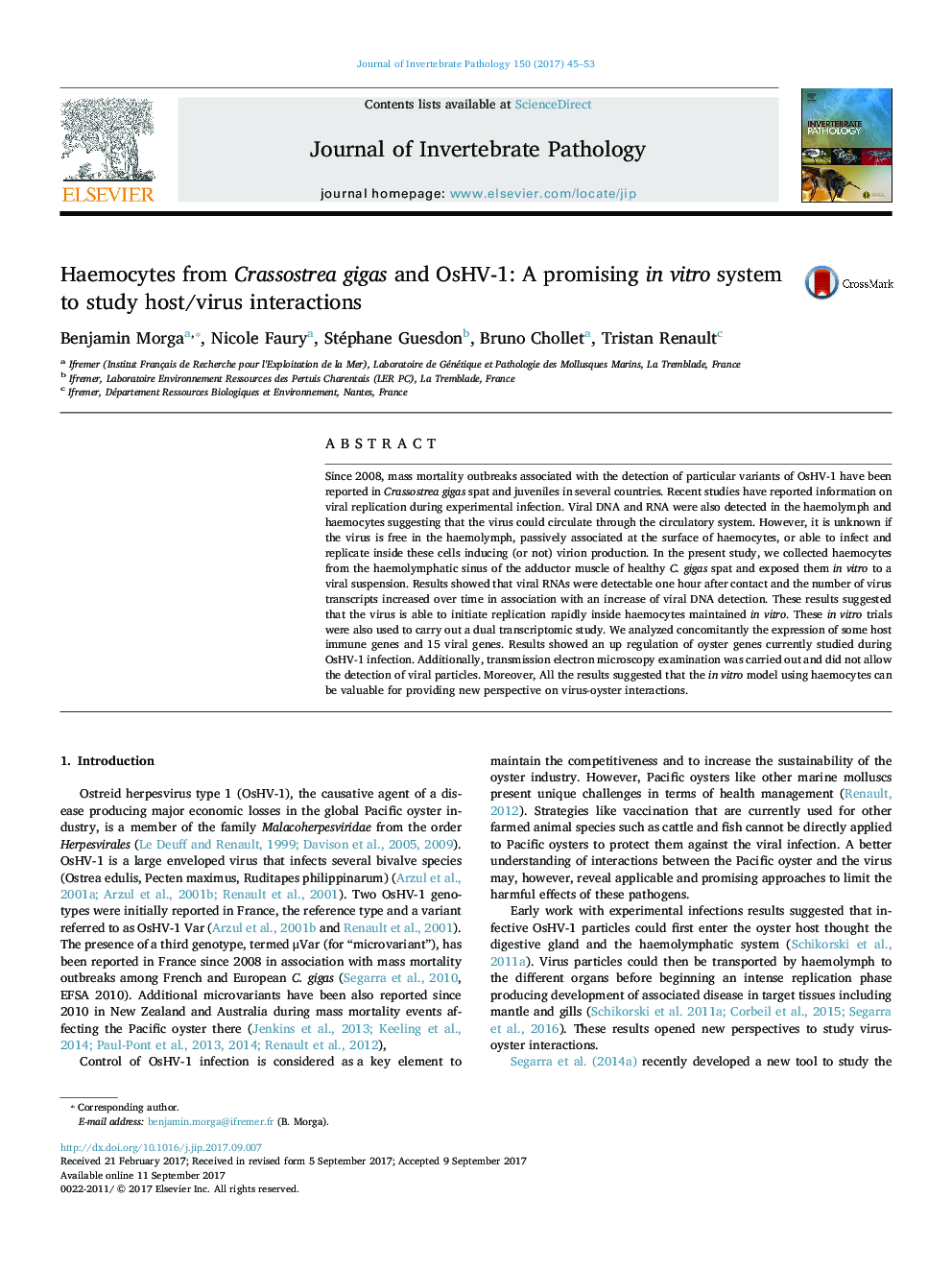| Article ID | Journal | Published Year | Pages | File Type |
|---|---|---|---|---|
| 5766909 | Journal of Invertebrate Pathology | 2017 | 9 Pages |
â¢This study is the first to show that OsHV-1 can initiate viral replication in haemocytes following an in vitro contact.â¢The results showed that there were differential patterns of expression of viral genes over time.â¢Our results open new ways of research in order to explore OsHV-1 pathogenesis.â¢Haemocytes are critical to innate immunity and the virus evolved to perturb host defence.
Since 2008, mass mortality outbreaks associated with the detection of particular variants of OsHV-1 have been reported in Crassostrea gigas spat and juveniles in several countries. Recent studies have reported information on viral replication during experimental infection. Viral DNA and RNA were also detected in the haemolymph and haemocytes suggesting that the virus could circulate through the circulatory system. However, it is unknown if the virus is free in the haemolymph, passively associated at the surface of haemocytes, or able to infect and replicate inside these cells inducing (or not) virion production. In the present study, we collected haemocytes from the haemolymphatic sinus of the adductor muscle of healthy C. gigas spat and exposed them in vitro to a viral suspension. Results showed that viral RNAs were detectable one hour after contact and the number of virus transcripts increased over time in association with an increase of viral DNA detection. These results suggested that the virus is able to initiate replication rapidly inside haemocytes maintained in vitro. These in vitro trials were also used to carry out a dual transcriptomic study. We analyzed concomitantly the expression of some host immune genes and 15 viral genes. Results showed an up regulation of oyster genes currently studied during OsHV-1 infection. Additionally, transmission electron microscopy examination was carried out and did not allow the detection of viral particles. Moreover, All the results suggested that the in vitro model using haemocytes can be valuable for providing new perspective on virus-oyster interactions.
Graphical abstractDownload high-res image (181KB)Download full-size image
